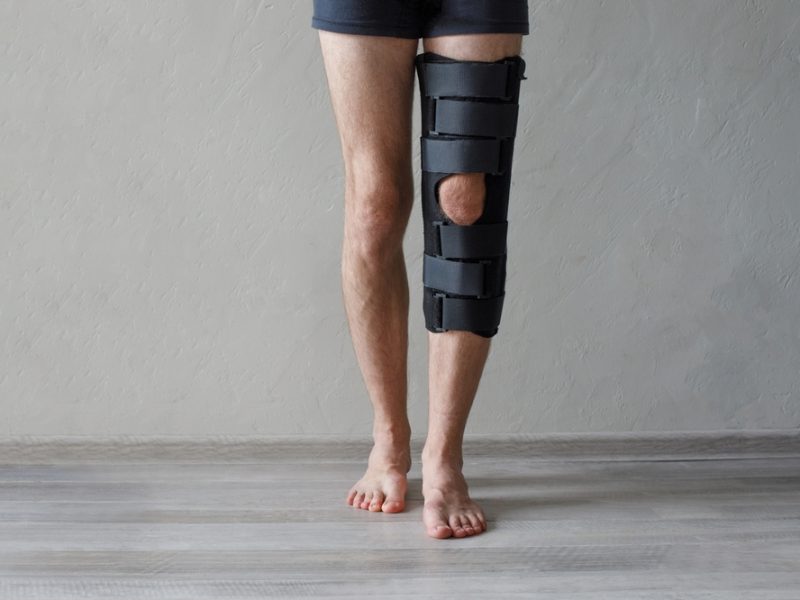
What is a PCL Tear?
The Posterior Cruciate Ligament (PCL) is one of the four main ligaments in the knee that connect the thigh bone (femur) to the shinbone (tibia). It is located at the back of the knee and helps stabilize it by preventing the shinbone from moving too far backward.
A PCL tear occurs when this ligament is overstretched or torn due to trauma, overuse, or sudden movements. Although less common than ACL (Anterior Cruciate Ligament) injuries, PCL tears can still cause significant knee pain and instability.
Causes of a PCL Tear
- Direct blow to the knee, especially when it’s bent (e.g., car accidents, sports injuries)
- Falling on a bent knee
- Sudden twisting movements
- Hyperextension of the knee
- Sports injuries (football, basketball, skiing, etc.)
- Motorcycle or car accidents (dashboard injury)
Symptoms of a PCL Tear
- Pain at the back of the knee
- Swelling and stiffness
- Difficulty walking or bearing weight
- Feeling of instability or looseness in the knee
- Limited range of motion
- Knee giving out when walking or using stairs
Complications If Left Untreated
- Chronic knee instability
- Risk of damaging other knee structures (meniscus, cartilage)
- Long-term arthritis
- Reduced mobility and function
- Weakness in leg muscles
Conventional Treatment Options
- Rest, Ice, Compression, Elevation (RICE)
- Physical therapy to strengthen surrounding muscles
- Bracing to support the knee
- Pain relievers or anti-inflammatory medications
- Surgery in severe or complete tear cases
How Acupuncture Helps in PCL Tear Recovery
Acupuncture is a natural and holistic therapy based on Traditional Chinese Medicine (TCM). It involves inserting fine, sterile needles into specific points on the body to promote healing and balance.
Benefits of Acupuncture in PCL Tear Healing:
- Reduces Pain and Inflammation
- Stimulates endorphin release (body’s natural painkillers)
- Improves blood circulation in the injured knee
- Lowers local swelling and stiffness
- Stimulates endorphin release (body’s natural painkillers)
- Enhances Tissue Healing
- Promotes oxygen and nutrient flow to the ligament
- Speeds up regeneration of damaged tissues
- Promotes oxygen and nutrient flow to the ligament
- Improves Knee Mobility
- Relieves tightness and restores flexibility
- Helps in regaining full range of motion
- Relieves tightness and restores flexibility
- Prevents Muscle Atrophy
- Stimulates surrounding muscles to stay active
- Reduces risk of weakness due to reduced use
- Stimulates surrounding muscles to stay active
- Balances the Body’s Energy (Qi)
- TCM believes that energy imbalance can delay healing
- Acupuncture harmonizes internal energy to support recovery
- TCM believes that energy imbalance can delay healing
- Complements Physiotherapy
- Can be used along with exercise rehabilitation for better results
- Helps patients tolerate physical therapy by reducing pain
- Can be used along with exercise rehabilitation for better results
Typical Acupuncture Treatment Plan for PCL Tear
- Initial Assessment: To understand the grade of the tear, symptoms, and overall health
- Frequency: 2–3 sessions per week in the beginning
- Duration: Around 4–6 weeks, depending on severity
- Focus Points: Local points near the knee (e.g., ST35, SP9), distal points for pain management (e.g., LI4, LV3)
Other Natural Tips Alongside Acupuncture
- Avoid weight-bearing activities early on
- Use knee support or brace as needed
- Do prescribed strengthening exercises
- Maintain a healthy anti-inflammatory diet
- Massage and cupping therapy (if recommended by a therapist)
Conclusion
A PCL tear can affect your daily mobility and knee stability, but with timely care, recovery is possible. Acupuncture offers a safe, natural, and side-effect-free way to relieve pain, reduce swelling, and support the healing of the ligament. Combined with rest and physiotherapy, it can speed up recovery and restore knee function.
If you’re experiencing symptoms of a PCL tear, consult both an orthopedic specialist and an experienced acupuncturist for a combined approach to healing.